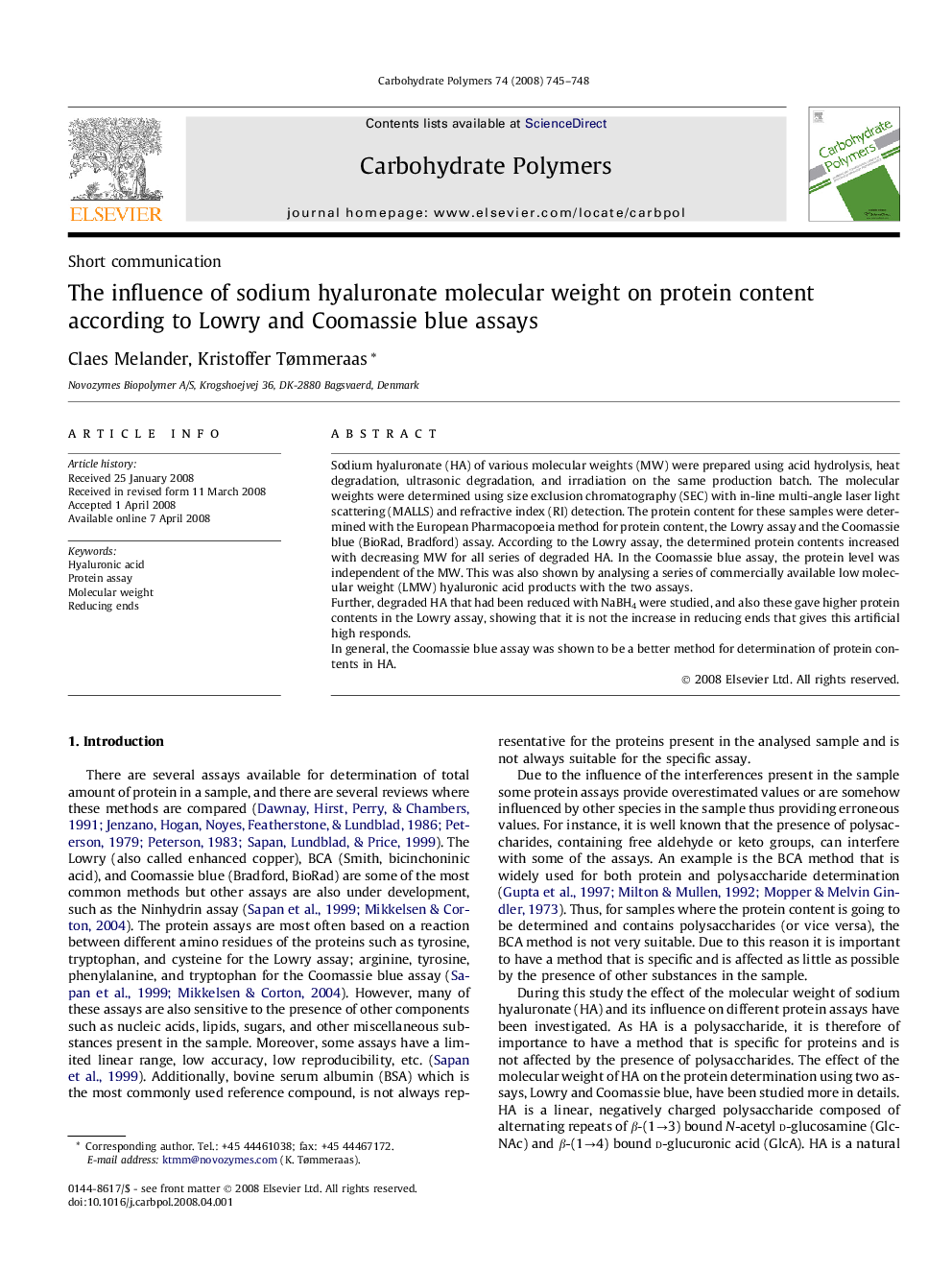| Article ID | Journal | Published Year | Pages | File Type |
|---|---|---|---|---|
| 1386452 | Carbohydrate Polymers | 2008 | 4 Pages |
Sodium hyaluronate (HA) of various molecular weights (MW) were prepared using acid hydrolysis, heat degradation, ultrasonic degradation, and irradiation on the same production batch. The molecular weights were determined using size exclusion chromatography (SEC) with in-line multi-angle laser light scattering (MALLS) and refractive index (RI) detection. The protein content for these samples were determined with the European Pharmacopoeia method for protein content, the Lowry assay and the Coomassie blue (BioRad, Bradford) assay. According to the Lowry assay, the determined protein contents increased with decreasing MW for all series of degraded HA. In the Coomassie blue assay, the protein level was independent of the MW. This was also shown by analysing a series of commercially available low molecular weight (LMW) hyaluronic acid products with the two assays.Further, degraded HA that had been reduced with NaBH4 were studied, and also these gave higher protein contents in the Lowry assay, showing that it is not the increase in reducing ends that gives this artificial high responds.In general, the Coomassie blue assay was shown to be a better method for determination of protein contents in HA.
